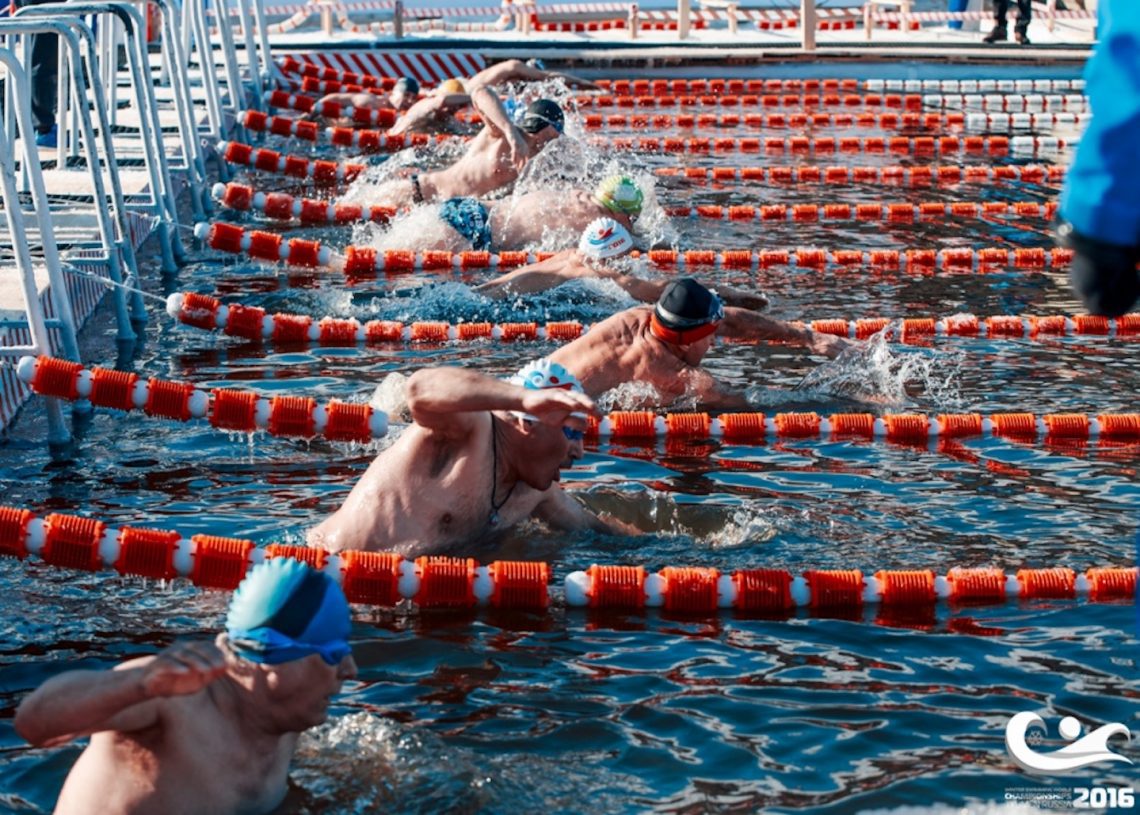
Training for a winter swimming event
Jonathan Cowie shares guidance for how to prepare for a winter swimming event, including cold-water acclimatization and stroke technique
Last issue I spoke to Colin Hill, vice president of the International Winter Swimming Association, and Hassan Baraka, International Ice Swimming Association official and organiser of Ice Swim Morocco, about why you should enter a cold-water swimming event this winter.
So obviously you are now signed up and ready to race! Whether you are competing in a contest in the UK or abroad, now is the time to start your preparation and training.
Choose your distance
Races in winter swimming championships are generally set distances of 25m, 50m, 100m, 200m and 450m or 500m. This article will not cover training for longer distances.
Races are head-up breaststroke or freestyle (any stroke). 25m ice fly is often also an option!
There are a number of considerations when racing in very cold water.
While winter swimming contests are a lot of fun, there is also a healthy dose of competition. So how should you train and prepare for a cold-water race?
Get used to the cold
Firstly, cold-water acclimatisation is key. It doesn’t matter how fast you are if the water is too cold for you to complete your race.
So regular cold-water swimming, cold showers or ice baths will help prepare your body for races where the water could potentially be colder than you are used to.
You should primarily work on speed in training sessions in the pool but some practice in the open water will prepare you for race day.
Racing vs dipping
Secondly, racing in cold water is different from racing in warm water and different from dipping in cold water.
When you race in the cold you have to deal with cold water shock, the effect of the cold on your breathing and how your body and mind deals with the cold as the race progresses.
There are many more factors to prepare for than in warm water. It is also different from cold water dipping: in a race there is no time for faff or a gentle entry into the water.
Practise the start of a race
You lower yourself into the water and it’s “on your marks, go!”. If you are a ‘faffer’ then try to replicate a cold-water race start in your training – but also be aware that on race day, adrenaline will kick in and your swim will be over before you know it!
Getting straight into the water and swimming hard is actually easier than it sounds – you don’t have time to worry about catching your breath in the cold if you are swimming at your max effort.
Easy does it
For slightly longer races, eg 200m, 450m, 500m, you might want to start off steady so you can catch your breath and then pick up the pace once your breathing is under control.
The only admissible breaststroke in winter swimming contests is “head-up” breaststroke. The crown (top of the head) must not submerge during the race.
Keeping your head out of the water makes it difficult to get a streamlined glide, so practise keeping your body position as horizontal as possible and making the most of the power from your kick.
Good luck and see you on the start line!
This article is from the January 2023 issue of Outdoor Swimmer. Click here to subscribe to the magazine.
Read more guidance on cold-water swimming and training.
To see all the online content from the January 2023 issue of Outdoor Swimmer, visit the 'Rest & Reflection' page.







